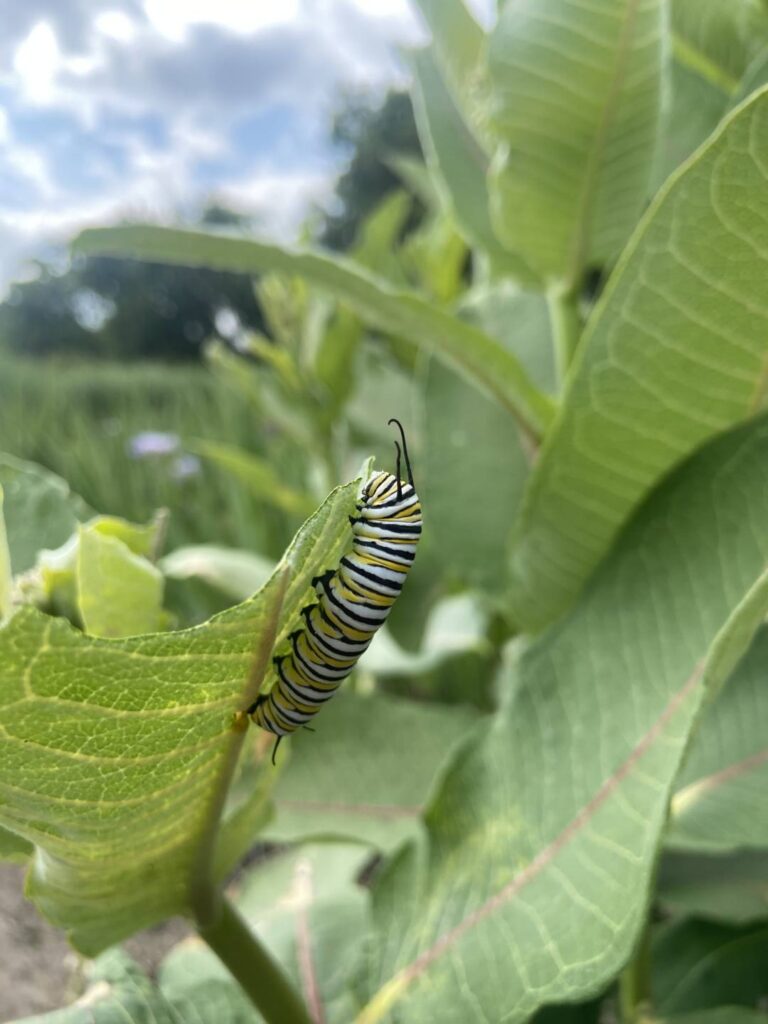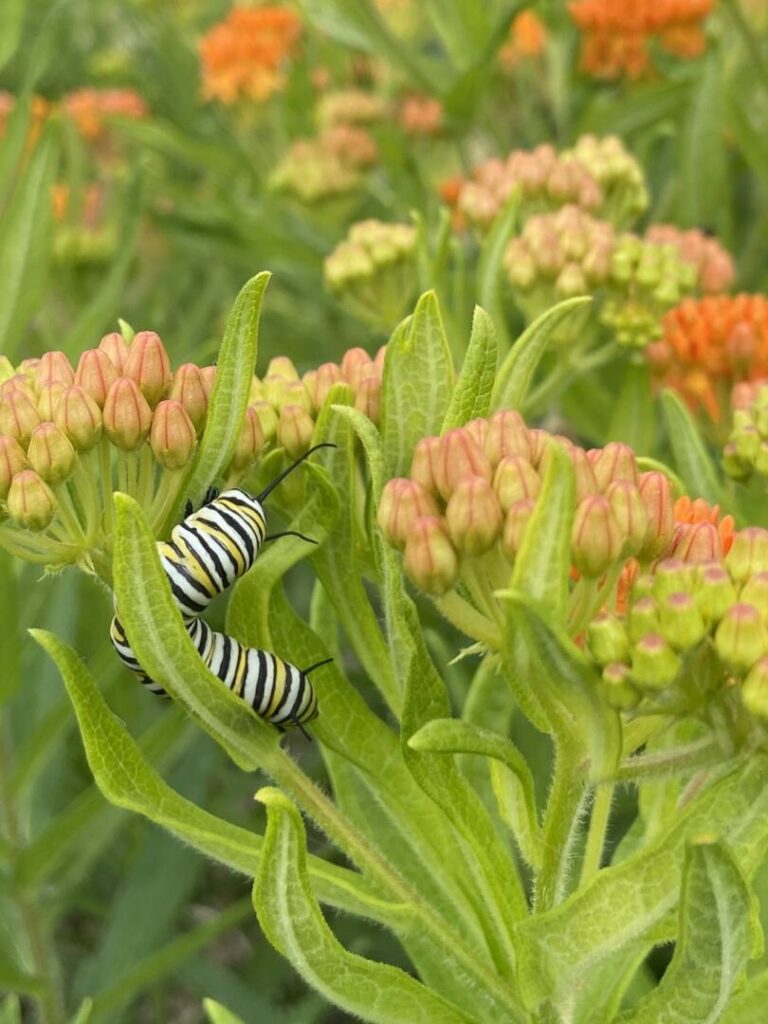Celebrating Pollinator Week
With A Close-Up Look At Asclepias
June 19-25, 2023 is Pollinator Week! In celebration of Pollinator Week, we took a walk around the Midwest Natural Garden with Enrique to get an up-close look at the four different Asclepias in our Natural Garden Natives® stock beds. As the only food source for Monarch caterpillars, Asclepias is vital to our native plant collection. At the Midwest Natural Garden, Enrique and his team grow Asclepias verticillata (Whorled Milkweed), Asclepias tuberosa (Butterfly Weed), Asclepias syriaca (Common Milkweed), and Asclepias incarnata (Rose or Swamp Milkweed). During our walk, we were able to locate multiple monarch caterpillars on each Asclepias variety!
Before we dive into the different types of Asclepias, it’s important to understand why stock beds play such an integral role in the native plant production process. A stock bed is a group of plants of the same species that are primarily used as a seed source for the plants that end up being grown for sale. The stock beds at the Midwest Natural Garden are unique from other plant nurseries in that all of the plants originated from seed that was sourced from within 90 miles of the nursery’s St. Charles location. These local eco-type native plants are vital to preserving native plant communities. One of the challenges of relying on local eco-type seed is when the plants in the stock beds do not perform well, Enrique cannot just go and order seed from another nursery to grow more plants. With this in mind, ensuring the stock beds thrive and taking steps to address beds that are not producing as needed, is imperative to a successful growing season.



As soon as Enrique notices plants in a stock bed are not growing as well as previous years, he takes steps to install new stock beds in other areas of the nursery. Asclepias tuberosa has historically been a troublesome variety to grow as it prefers very dry, infertile, sandy soil and can tolerate wet conditions only briefly. While an unconventional area for a stock bed, Enrique has found planting Asclepias tuberosa along a gravel berm provides them with the drainage they need to thrive.
As a result of a very dry May and June, many of the more mature Asclepias incarnata are about 18” shorter than they would typically be this time of year. Unfortunately, it seems plausible the drought conditions we are experiencing this year could lead to less food for the Monarch population in the coming months. Just one more reason to add some Asclepias to your garden this summer!
A new Asclepias incarnata stock bed was planted just a few weeks ago to supplement an older bed that showed some poor growth. While this new stock bed may not produce an abundance of seed this year, Enrique feels confident the freshly tilled soil will help it acclimate well and produce robust plants for seed propagation in the 2024 growing season. Enrique noted many gardeners give up Asclepias incarnata too soon and believe their plants didn’t survive the winter. Often what’s really happening is Asclepias incarnata just prefers warmer temperatures, making it slower to wake up.
Asclepias syriaca is the most common type of milkweed found in our area and it is also a Monarch caterpillar’s favorite type to munch on. In the butterfly stage, Enrique has observed Asclepias tuberosa to be the favorite source of nectar. If you’re looking to add some Asclepias to your garden, your best bet is to choose the variety that works best for your site conditions. After thinking about soil and light conditions, along with the mature size of each species, take into consideration how the different varieties spread. Asclepias incarnata and Asclepias tuberosa are clump-forming, meaning they pretty much stay where you plant them. Asclepias syriaca and Asclepias verticillata on the other hand, spread by runners and can become aggressive in the home garden if left unchecked. Asclepias syriaca can also spread rapidly if seedpods are left to open in the fall.
If you choose to grow Asclepias in your garden, know that whichever variety you choose, you are making a positive difference! Happy Pollinator Week!
Back To Blog
